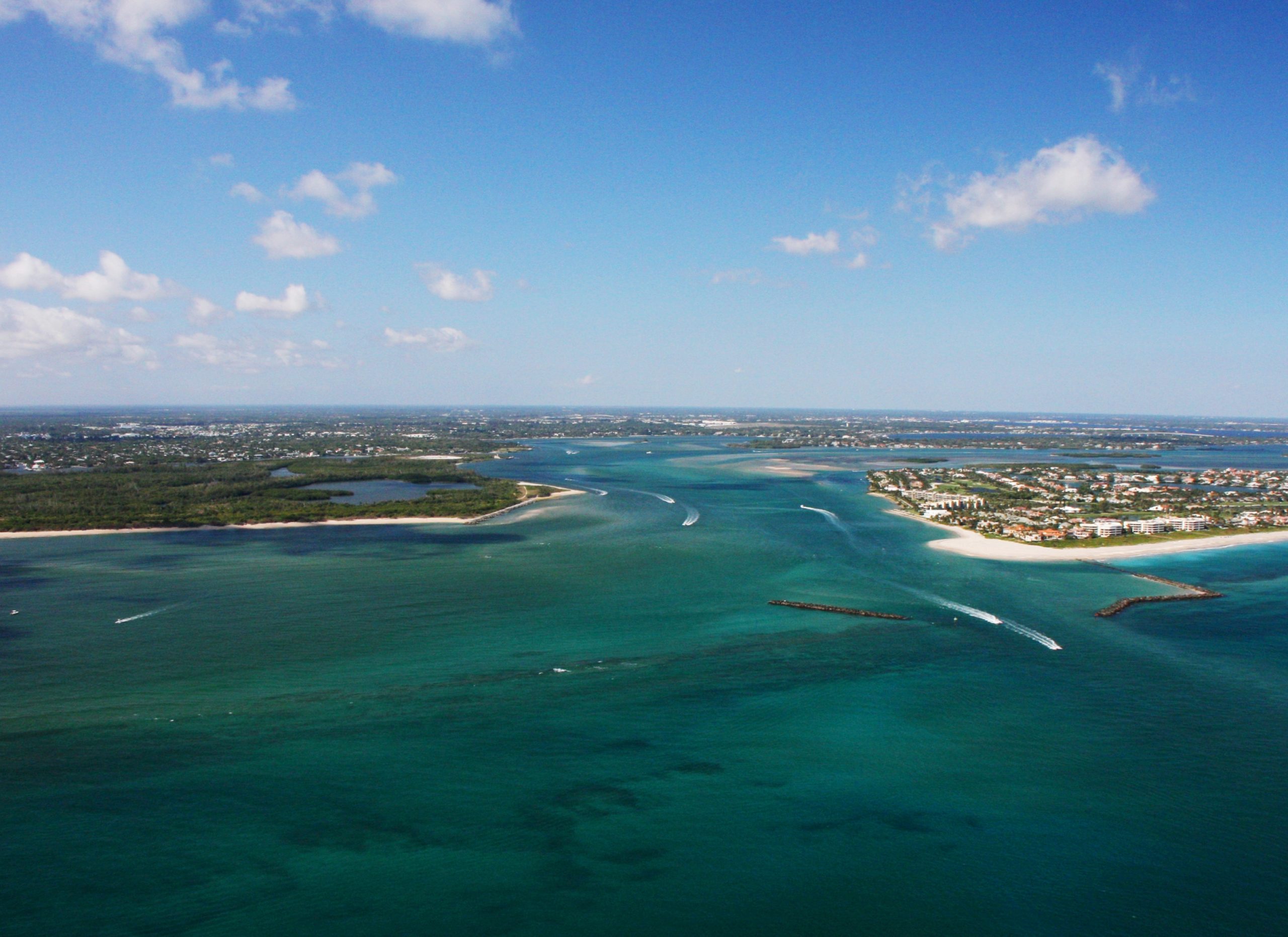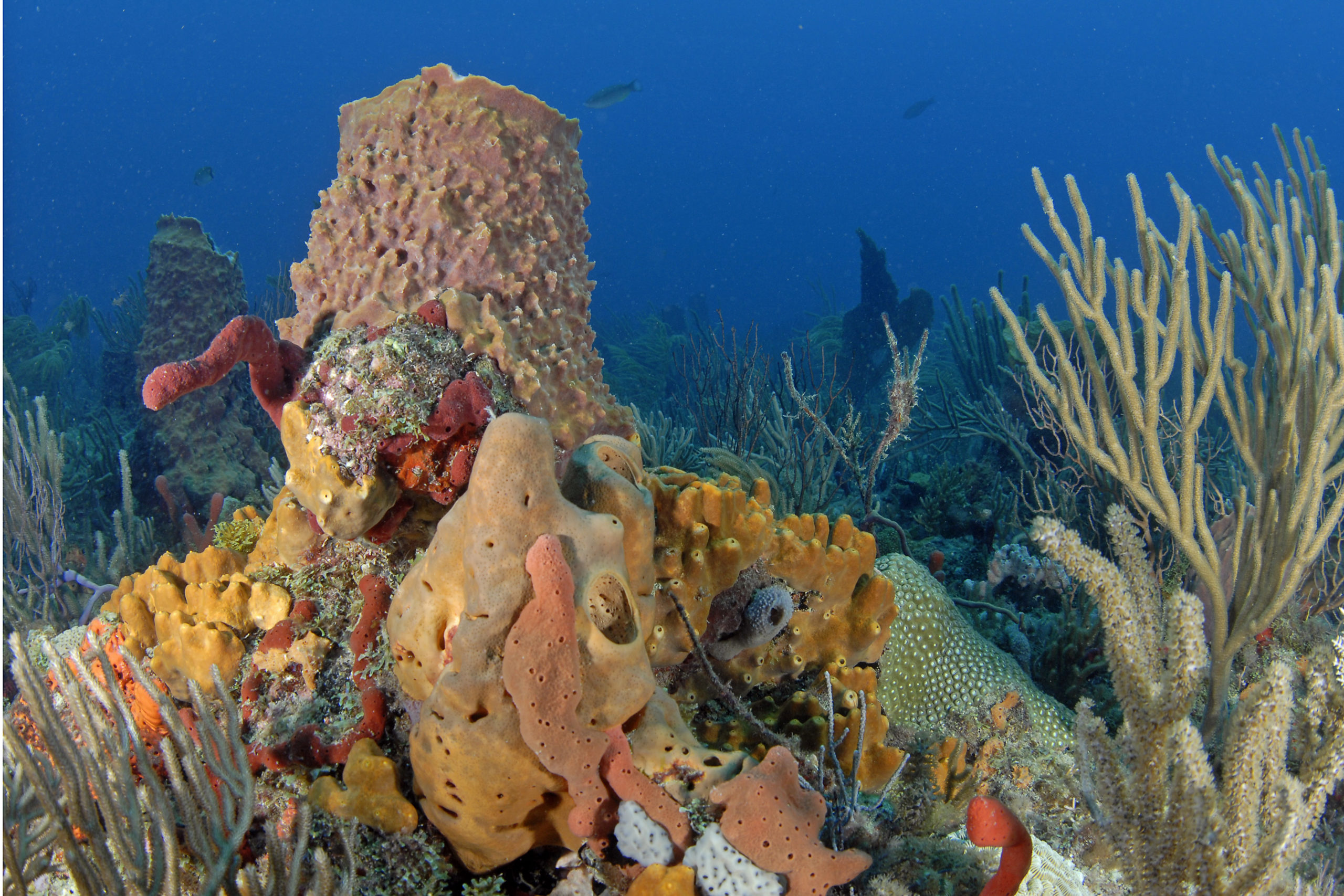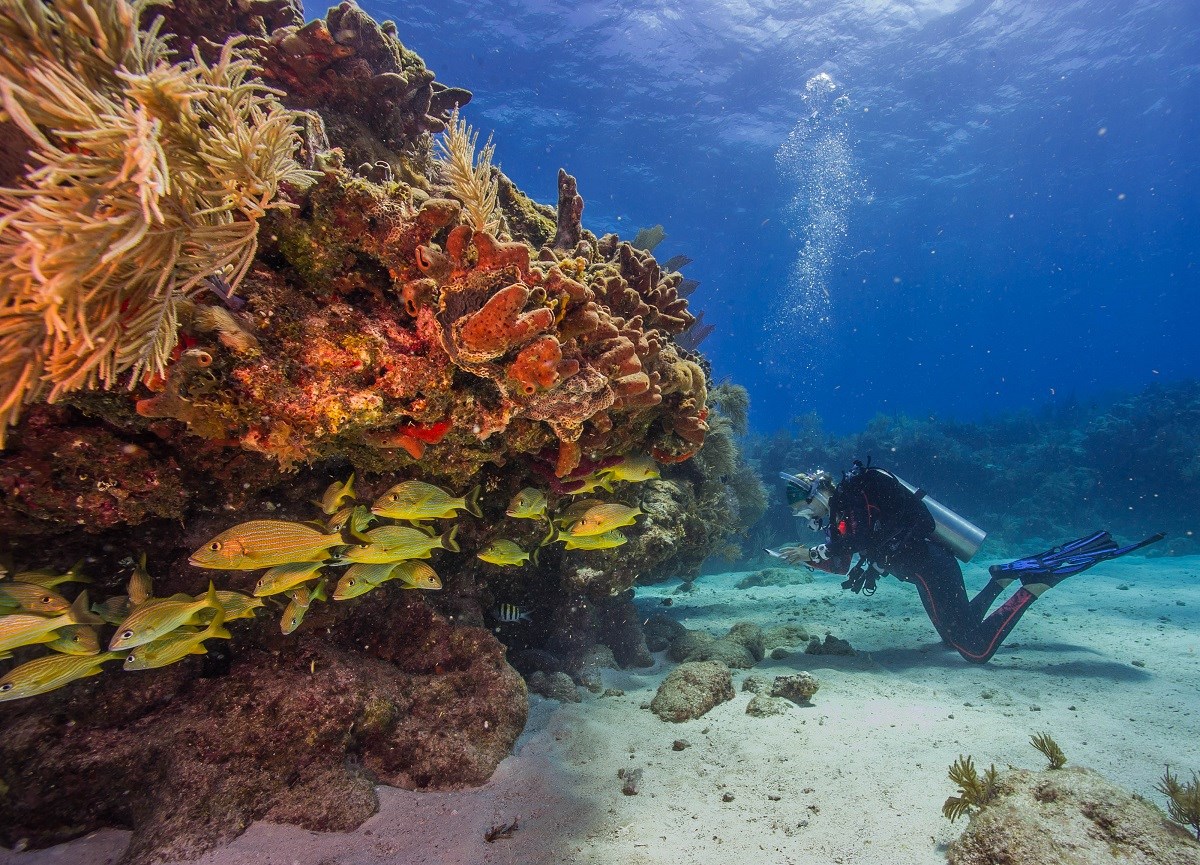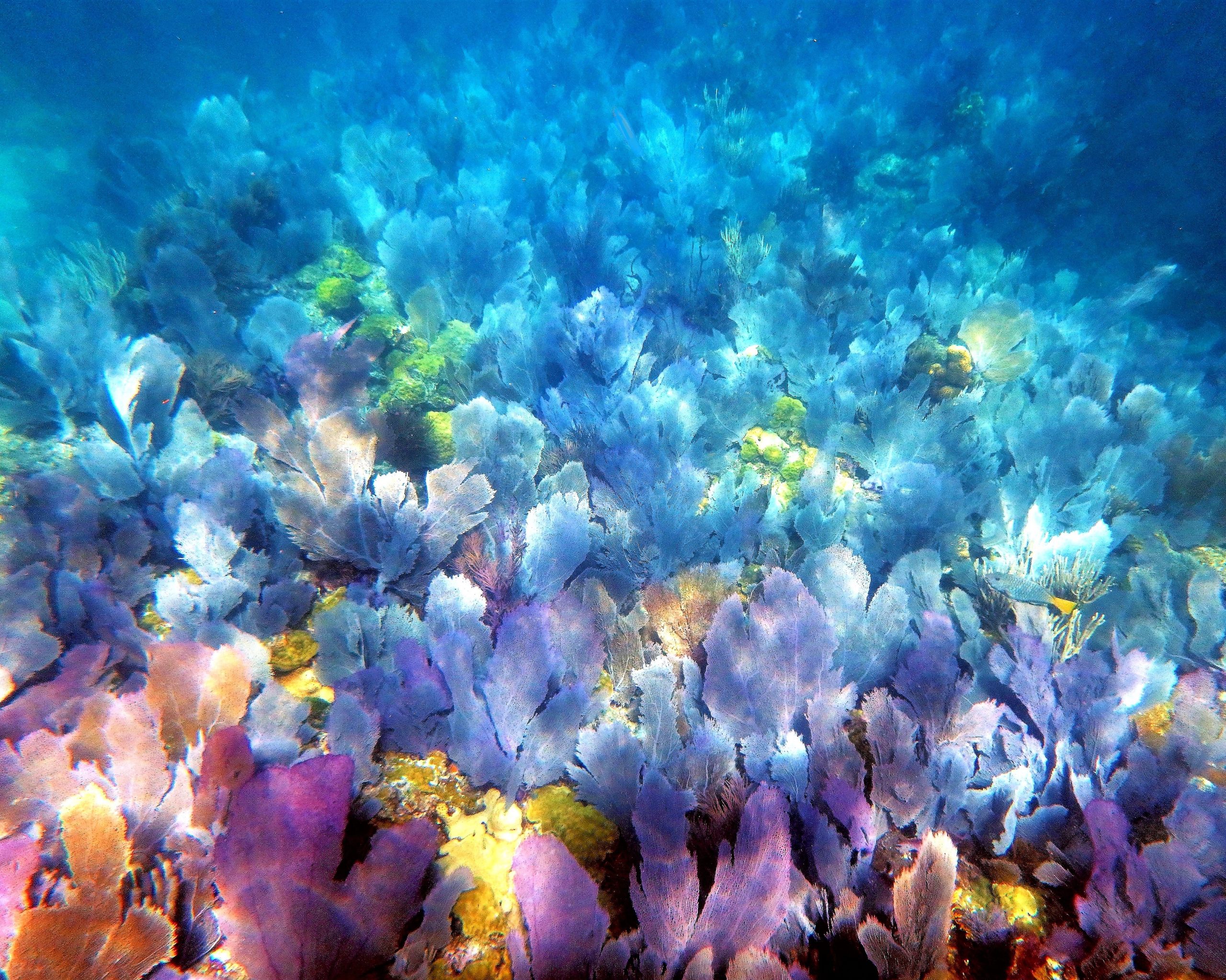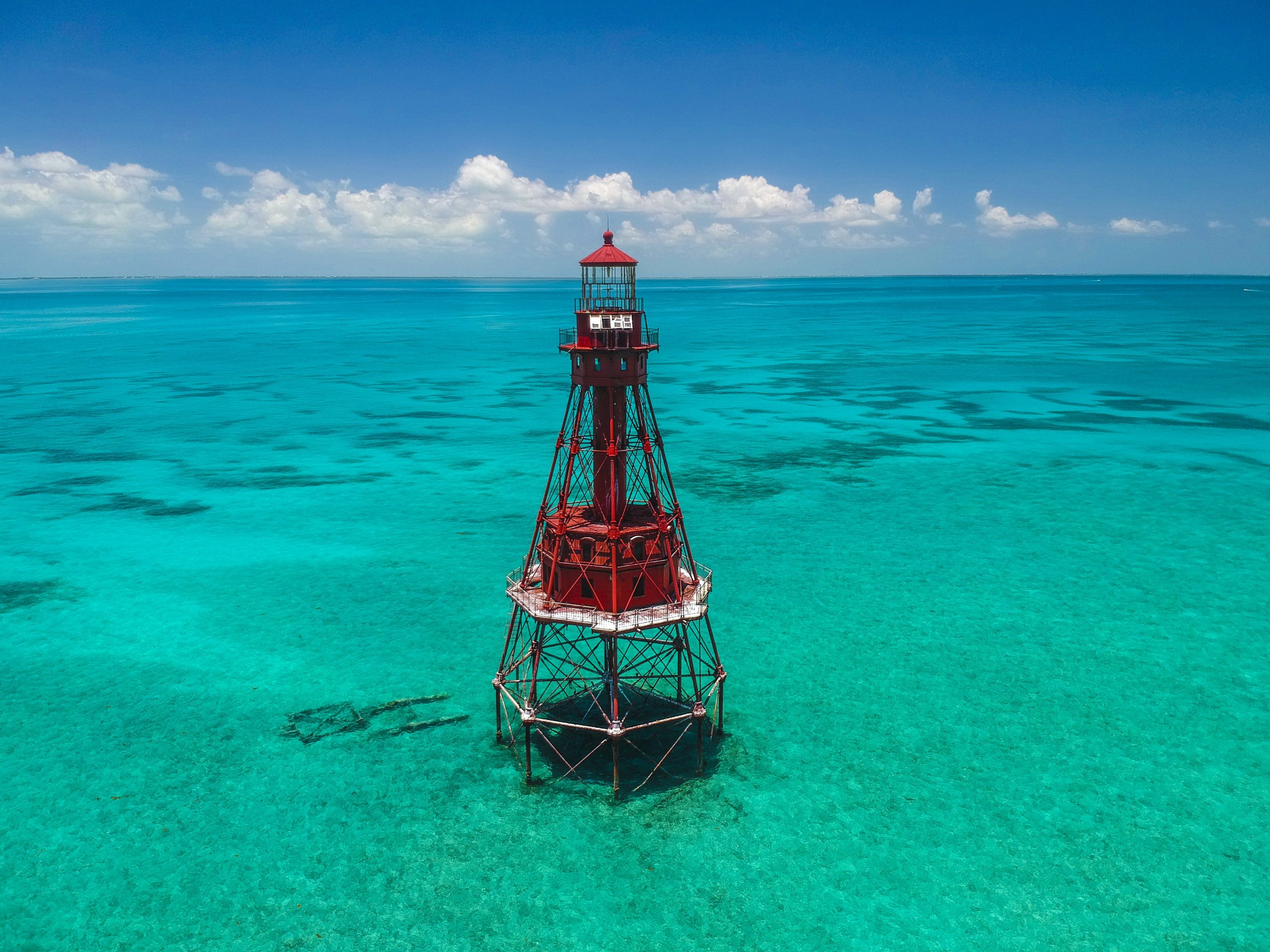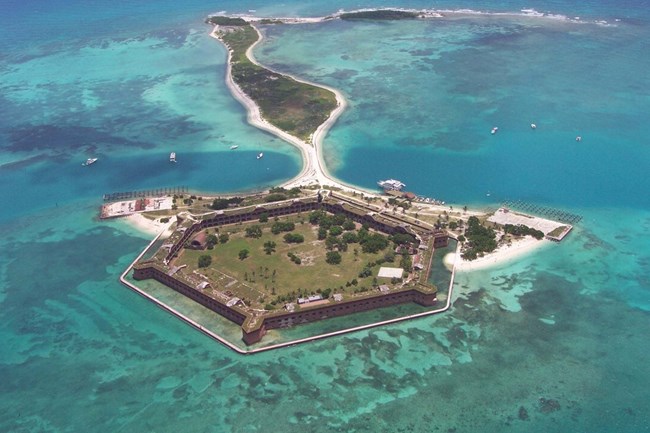Glossary of Terms
A
Adaptation
The changes in an organism to become more suited to its environment. These can be changes in structure, behavior or how the organism functions.
Algae
Plant-like life that lacks the structures that plants have, such as true stems, roots and leaves. Algae includes small, single-celled examples known as micro-algae, and larger, often multi-celled examples such as seaweed, known as macro-algae.
Anthropogenic
Caused or produced by humans.
Apex predator
An organism that resides at the top of the food chain and has few to no predators. They help regulate the food chain. Examples on Florida’s Coral Reef include bull sharks (Carcharhinus leucas) and bottlenose dolphins (Tursiops truncatus).
Aquatic Preserve (AP)
In 1975, Florida enacted the Aquatic Preserve Act to ensure the continuation of aquatic preserves' natural conditions through monitoring and management. In Florida’s Coral Reef, this includes the Biscayne Bay Aquatic Preserve, Lignumvitae Key Aquatic Preserve and Coupon Bight Aquatic Preserve. The Florida Department of Environmental Protection manages all 42 aquatic preserves in the state of Florida.
C
Calcification
The rate at which coral absorbs calcium from seawater to create their hard 'skeletons.'
Community-Based Observations of Coastal Ecosystems and Assessment Network (C-OCEAN)
C-OCEAN is a citizen reporting program designed to provide early detection and assessment of biological events occurring in the Florida Keys and surrounding waters.
Coral
A type of cnidarian that mostly forms large colonies made up of individual polyps, surrounded, in the case of hard corals, by a calcium carbonate structure.
Coral bleaching
Occurs when the microscopic algae (see Symbiodinium) living within coral tissues are expelled due to a change in water chemistry (temperature, salinity, pH) leaving the coral skeleton looking bleached. If the Symbiodinium do not return before the coral starves, and they will only do so under optimum conditions, the coral dies.
Coral Spawning
During spawning, clouds of coral eggs and sperm float in all directions, at the mercy of the currents, winds and waves. When egg and sperm do eventually meet, many of the resulting larvae can drift away from reefs and die. Only very few of the larvae settling on reefs take hold and reach breeding age themselves.
Coralline Algae
A type of algae that uses calcium carbonate to build their cell walls. Hard, encrusting, red coralline algae are significant reef builders in some areas.
Corallivore
An organism that feeds on coral polyps. Examples on Florida’s Coral Reef include butterflyfish species.
S
Stony Coral Tissue Loss Disease (SCTLD)
Stony Coral Tissue Loss Disease (SCTLD). Beginning in the fall of 2014, a previously undescribed disease was identified near Miami; diseased corals experience progressive tissue loss, and in some cases, mortalities. Some coral species are more resilient, with less tissue loss and lower mortality, while some are more vulnerable, with greater tissue loss and a high likelihood of mortality. The disease has spread to the north and south extent of Florida’s Coral Reef, as far as the northern extent of the reefs in Martin County and as far south as the Dry Tortugas National Park (as of 2021). Scientists are still working to understand the causes, however, treatments have been successful in saving diseased corals and are being widely used.
Salinity
The amount of dissolved salt in a body of water, measured in parts per thousand (ppt). Typically, the ocean has a range of 31-38 ppt (31-38g of salt per litre).
Sedimentation
Sediment particles suspended in the water. For example, sand, fragments of rock, organic matter, and other small particles that are washed out to sea and can fall to cover the seafloor.
Sessile
Not able to move; for instance, corals that have settled on Florida’s Coral Reef.
South Atlantic Fisheries Management Council (SAFMC)
SAFMC is responsible for the conservation and management of fish stocks within the federal 200-mile limit of the Atlantic off the coasts of North Carolina, South Carolina, Georgia and east Florida to Key West.
Southeast Florida Action Network (SEAFAN)
SEAFAN is a citizen reporting and response system designed to improve the protection and management of southeast Florida's offshore coral reefs by enhancing marine debris cleanup efforts, increasing response to vessel groundings and anchor damage, and providing early detection of potentially harmful biological disturbances.
Southeast Florida Coral Reef Initiative (SEFCRI)
SEFCRI is a local action strategy for collaborative action among government and non-governmental partners to identify and implement priority actions needed to reduce key threats to coral reef resources in southeast Florida, which includes Miami-Dade, Broward, Palm Beach and Martin counties.
Substrate
The material that forms the seafloor, e.g. sandy substrate, rocky substrate, etc. This is a surface where an organism can attach and/or grow.
Symbiodinium
Symbiodinium are microorganisms that live in the tissue of corals, sea anemones and jellyfish, giving them life and colour. Like plants, Symbiodinium can photosynthesise to make food from sunlight and this food feeds the host coral. Corals expel their Symbiodinium when stressed, leaving them white (see Coral Bleaching), and if the Symbiodinium does not return the coral dies.
Symbiosis
A close ecological relationship between the individuals of two (or more) different species. Sometimes a symbiotic relationship benefits both species, sometimes one species benefits at the other's expense, and in other cases neither species benefits.
E
Ecosystem
An ecosystem is a complex set of relationships between animals, plants, and other life and their environment in a given area.
Ecosystem services
The benefits people obtain from ecosystems, also known as nature's contributions to people (NCP). These are all the contributions, both positive and negative, of living nature (i.e. diversity of organisms, ecosystems, and their associated ecological and evolutionary processes) to the quality of life for people. Beneficial contributions from Florida’s Coral Reef include such things as food provision, coastal protection from storms, local ecological knowledge and artistic inspiration.
Encrusting
A coral growth form that adheres to rocky substrates. They grow outward rather than upwards, covering the rocky substrate.
Endangered Species Act (ESA)
The ESA was enacted in 1973 as a tool to conserve and protect endangered and threatened species and their habitats. Species can be listed as threatened or endangered, cueing resources for protection and restoration, with the ultimate goal of recovery to the point of no longer being classified as threatened or endangered. In Florida’s Coral Reef, two iconic species were listed as threatened in 2006--elkhorn and staghorn corals, Acropora cervicornis and Acropora palmata--leading to the development of critical habitat and recovery plans for these species.
Environmental Protection Agency (EPA)
The US EPA is the United States’ lead agency for environmental management and stewardship, charged with protecting citizens’ air, water and land.
Eutrophication
The process where excess nutrients (often fertiliser from land) increases the amount of algae in the ocean. This results in algal levels that are too great for herbivorous animals to consume. When the excess algae dies, the bacteria feeding on it use increasing amounts of oxygen in their area of the ocean. This reduces the amount of oxygen available to other marine life and can lead to anoxic or dead zones.
F
Florida Coral Reef Conservation Program (CRCP)
The CRCP manages the northern section of Florida’s Coral Reef, from the St. Lucie Inlet to the northern border of Biscayne National Park. The CRCP coordinates research and monitoring, develops management strategies, and promotes partnerships to protect the coral reefs, hard bottom communities and associated reef resources along Miami-Dade, Broward, Palm Beach and Martin counties. The CRCP leads the implementation of the Southeast Florida Coral Reef Initiative and contributes to the National Action Plan to conserve coral reefs. The Coral Reef Conservation Program is also charged with coordinating response to vessel groundings and anchor damage incidents in southeast Florida, and developing strategies to prevent coral reef injuries. CRCP is housed and managed by the Florida Department of Environmental Protection.
Florida Department of Environmental Protection (DEP)
DEP is the state’s lead agency for environmental management and stewardship, charged with protecting Floridian’s air, water and land.
Florida Fish and Wildlife Commission (FWC)
FWC manages fish and wildlife resources in collaboration with other local, state, and federal agencies and organizations.
Florida Fish and Wildlife Research Institute (FWRI)
FWRI monitors terrestrial, aquatic and freshwater habitats in Florida, including support for restoration and decision making by the FWC. FWRI collaborates on the coral disease response for Florida’s Coral Reef.
Food Web
A series of food chains that make up an ecological community, depicting the feeding connections in that community.
Fragmentation
A type of asexual reproduction when a coral is intentionally or unintentionally broken off from the parent coral. This may be used in coral reef restoration programs.
G
Genome, Genomics
The genome is the complete set of genetic material (DNA/RNA) of an organism. Genomics is the branch of molecular biology concerned with the structure, function, evolution and mapping of genomes.
Geographic Information System (GIS)
A tool used by scientists and other experts to display and analyze a large data set that is linked to a latitude and longitude.
H
Habitat Structure
Habitat structure mainly refers to the physical complexity of reef habitats. Reef environments with reduced habitat complexity will support only a fraction of the species and individuals found in complex flourishing reef habitats. High levels of habitat structure is a fundamental attribute of resilient coral reefs.
Herbivore
An organism that feeds on plants. Examples on Florida’s Coral Reef include parrotfish and surgeonfish species.
L
Land-Based Pollution
Impacts from land-based pollution—including coastal development, deforestation, agricultural runoff, and oil and chemical spills—can impede coral growth and reproduction, disrupt overall ecological function, and cause disease and mortality in sensitive species.
Larva
A juvenile form of an organism that usually looks very different from the adult form. Plural: larvae.
M
Massive
A growth form that includes corals that look like domed boulders.
Mitigation
Climate change mitigation is the process of taking actions to reduce the extent of climate change. This is in contrast to adaptation, the process of adapting to new conditions which develop as a result of climate change (see Adaptation). An example of mitigation is planting trees to offset carbon emissions.
Monitoring
Regular collection of water quality samples (e.g. nutrient concentration, water temperature) or biological observations (e.g. fish counts, coral counts) or images (photo transects, satellite imagery) used to measure and track changes in conditions at a specific location. On Florida’s Coral Reef, this includes the Coral Reef Evaluation and Monitoring Project (CREMP) and National Coral Reef Monitoring Program (NCRMP).
N
National Environmental Policy Act (NEPA)
NEPA requires federal agencies to assess the environmental effects of their proposed actions prior to making decisions-for example, construction or approving the construction of coastal infrastructure. Using the NEPA process, agencies evaluate the environmental and related social and economic effects of their proposed actions and give the public an opportunity to review and comment on those evaluations.
National Marine Fisheries Service (NMFS)
NMFS, or NOAA Fisheries, is responsible for the stewardship of the nation's ocean resources and their habitat. Using the Magnuson-Stevens Act as their guide, NOAA Fisheries assesses and predicts the status of fish stocks, sets catch limits and ensures compliance with fisheries regulations.
National Oceanic and Atmospheric Administration (NOAA)
NOAA is the federal agency that coordinates monitoring and management of the United States’ oceans, fisheries, weather and climate.
Nematocyst
Specialized stinging cells located in the ectodermis of the tentacles of a polyp that aid in predation.
O
Ocean Acidification
Ocean acidification is the name given to the ongoing decrease in the pH of the Earth's oceans (increasing acidity), caused by the absorption of anthropogenic carbon dioxide (CO2) from the atmosphere.
Ocean Current
The continuous movement of ocean water in a prevailing direction.
Octocorals
A subclass of corals whose polyps have eight-fold symmetry (hence, “octo” corals). Octocorals are soft corals known as sea fans, sea plumes, soft corals, sea pens, sea rods, gorgonians and their relatives. On Florida’s Coral Reef, they often outnumber stony coral species and may represent a greater percent of living biomass in local reef and rocky bottom habitats.
P
Photosynthesis
The process used by plants, algae, and some bacteria to make sugars (and thereby energy) from the sun.
Planktivore
An organism that feeds on plankton.
Polyp
A body form of a cnidarian that is cylindrical in shape with a mouth surrounded by tentacles.
R
Resilience
The ability of the reef to resist and recover from disturbance.
T
Turbidity
A measure of the clarity of water. It can be affected by phytoplankton, sediments, runoff, pollution, etc.
U
United States Coral Reef Task Force (USCRTF)
USCRTF was established in 1998 by Presidential Executive Order 13089 to lead U.S. efforts to preserve and protect coral reef ecosystems by building partnerships, strategies and support for on-the-ground action. USCRTF includes leaders of 12 federal agencies, seven U.S. states, territories, commonwealths and three freely associated states.
W
Water Quality
The physical, chemical and biological characteristics of water in relationship to a set of standards.
Z
Zooplankton
Animal-like organism that lives in aquatic environments. For some, this is the larval form of animals such as sea urchins, coral, crabs, worms, etc.
Zooxanthellae
Zooxanthellae is the colloquial name for Symbiodinium (See Symbiodinium)
